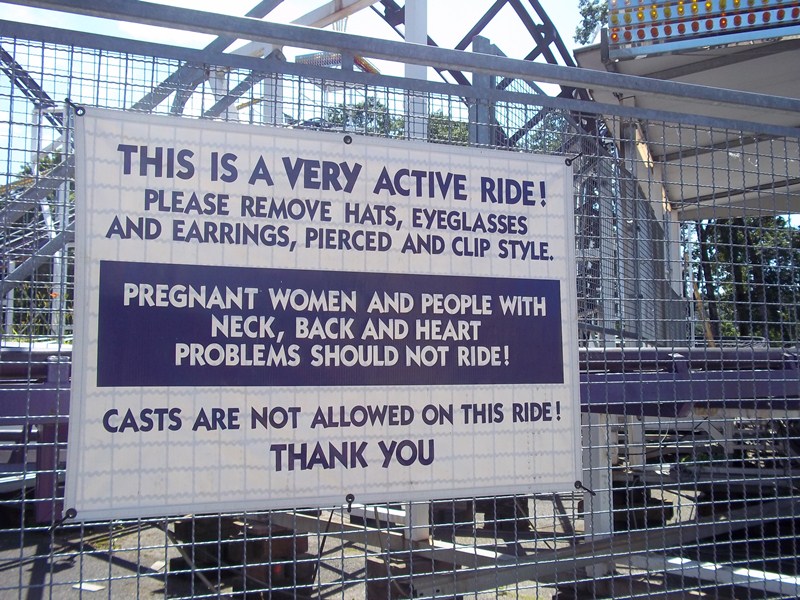The Newest Theme Park Trend is….Safety?
Posted by Sasha Bailyn on Friday, March 18th, 2016
 Over the past several years, a few devastating accidents have made front-page headlines around the world and raised concerns about theme park safety. A number of op-eds have asked “How Safe Are Theme Parks Really?” The industry has responded strongly, with an ongoing commitment to safety protocols and operation training, integrating new technologies and creating forums for sharing best practices. Let’s take a closer look at how theme parks are balancing precision engineering with heart pounding thrills in ride design and magical environments with deploying smart security.
Over the past several years, a few devastating accidents have made front-page headlines around the world and raised concerns about theme park safety. A number of op-eds have asked “How Safe Are Theme Parks Really?” The industry has responded strongly, with an ongoing commitment to safety protocols and operation training, integrating new technologies and creating forums for sharing best practices. Let’s take a closer look at how theme parks are balancing precision engineering with heart pounding thrills in ride design and magical environments with deploying smart security.
When you mention theme park safety, it’s natural to think about ride accidents. Yet the vast majority of issues with theme park rides fall into what can fairly be called the “mild” category. According to one analysis, the most common issues are guests getting dizzy or nauseous. Others are injured getting on or off a ride. Temporary neck and back pain aren’t uncommon. Serious injuries – what we’d think of as accidents – are more rare.
The analysis revealed that the more serious injuries tended to take place on older rides, on water attractions and roller coasters, and to occur when rides malfunctioned. As harnesses, safety features and operator training have become more sophisticated, there have been fewer accidents in modern parks. Some incidents occur every year, but ride manufacturers and park operators work in tandem to reduce or eliminate issues whenever possible.
Vigilance is an important part of park safety. Parks need plans, an understanding of best practices and well-trained staff overseeing safety issues. IAAPA is sponsoring a Safety Institute later this year in Edmonton that’s a good example of the most important issues. The event’s schedule shares best practices and insights from industry leaders. The schedule offers an inside look into what parks are thinking about: maintenance and safety schedules, handling major emergency events, risk management, water park safety standards, best practices in technical ride inspection and industry-specific work groups that focus on issues like traveling fairs. It’s easy to see that oversight and safety has become a complex affair, as rides become more sophisticated.
From the perspective of ride manufacturers and designers, safety is a constant consideration. While audiences (and to a certain extent, client parks) are demanding faster and higher experiences, designers have to balance the search for fun with safety. A record-breaking attraction is only valuable if it delights and entertains while keeping everyone safe. Accidents can destroy brand names and carry serious financial consequences. Engineering, safety and operation standards carry throughout the ride manufacturing process – from ideation to opening day.
Yet for park operators, safety conversations go beyond ride operations and into the realities of managing large crowds. In fact, a piece late last year in the L.A. Times noted that both Disney and Universal Studios had stepped up security in the wake of violent public events. Steps taken included installing metal detectors, more aggressive guest screenings and more visible security measures. Undoubtedly, behind the scenes crowd control and observation played an important part – although parks remain fairly close-lipped about what steps they are taking. From banning toy guns to more hands-on security checks, the L.A. times authors concluded that the additional steps, “represent an acknowledgment by the nation’s $55-billion-a-year theme park industry that past insistence on discrete, behind-the-scenes security doesn’t go far enough to protect guests from potential terrorist attacks.”
One look at the exhibitor lists of industry trade shows demonstrates that security and safety concerns are front and center. The attractions industry is looking for ways to more consistently train staff, monitor ride performance, and oversee crowds for safety without disrupting guests’ enjoying. Advanced technologies across the board – from crowd scanning software to IOT devices that can signal when maintenance is needed for rides – will play an important part of delivering that promise.
There’s often a perceived tension between visible security and business practices and the fun, escapist alternate realities that theme parks seek to create. Reminding guests of danger and stress can draw them out of the stories that seek to engage and entertain them. Yet theme parks globally are serious about keeping guests safe and are working hard on new technologies, approaches and communications strategies to achieve that goal.
Images sourced courtesy of KansasCity.com, Theme Park Review, Pinterest



 Sign Up For Our Newsletter
Sign Up For Our Newsletter 



